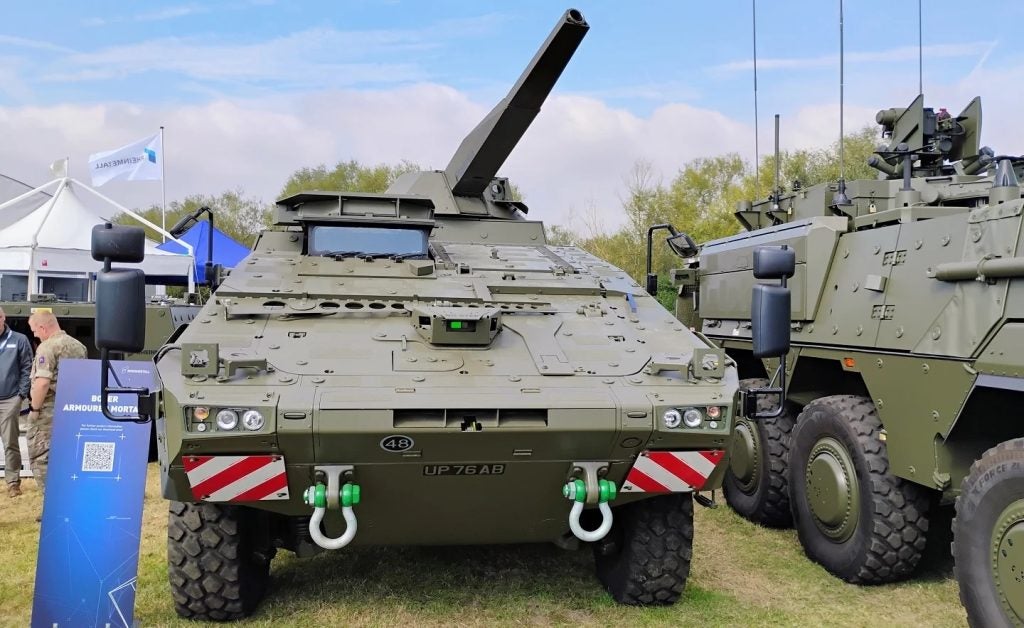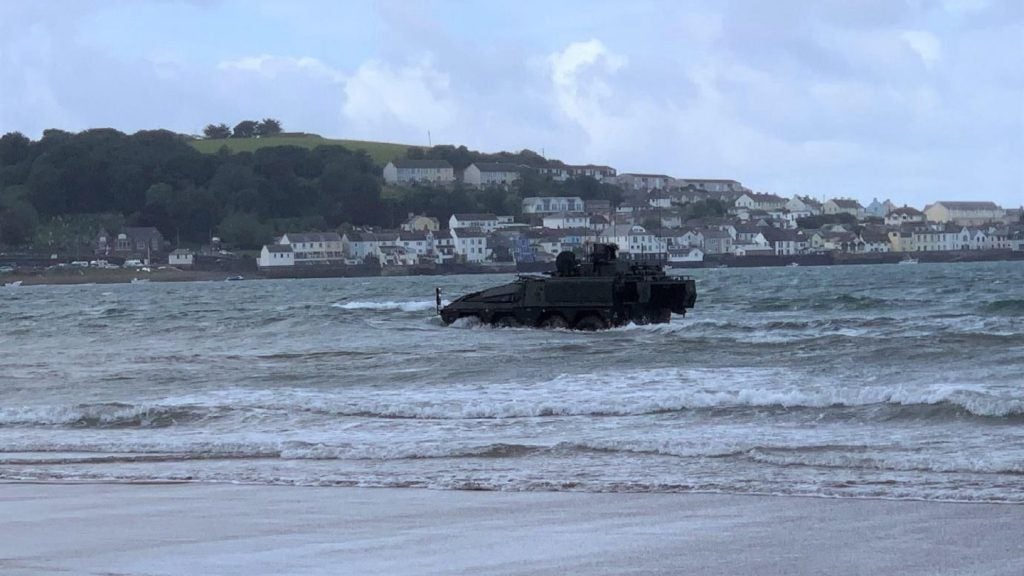The British Army’s Boxer mechanised infantry vehicle (MIV) has completed its sea water fording trial at Instow Beach in North Devon, UK, the latest milestone in an ongoing effort to deliver the service’s new armoured vehicle.
In a social media post on 24 October 2024, the British Army’s Programmes department stated that the 38.5 tonne (t) platform has “performed excellently” and show “stability and control”, in an exercise it says proves Boxer can ford water unprepared.
The ability of the Boxer MIV to ford water obstacles is well understood, with the platform in service with a range of European countries for several years. Indeed, the UK was one of the inaugural partners of the Boxer programme but dropped out before subsequently rejoining in 2018.
According to the UK government, although the Boxer MIV is not a direct replacement for the outgoing tracked Warrior infantry fighting vehicle, the platform “will become the Army’s primary mechanised infantry platform working with Ajax and Challenger 3 in the Brigade Combat Teams”, stated Minister for the Armed Forces Luke Pollard in mid-October.
“Warrior will remain effective until new capabilities are introduced throughout the decade,” Pollard added.
The UK government has also reiterated that the British Army has conducted operational analysis, lethality, and survivability studies, to include the potential for turreted gun system options for the Boxer programme.
“The Army will continually review the capabilities, priorities and affordability choices that will be provided by Boxer and other platforms to ensure that its armoured fighting vehicle fleet best meets defence and Nato’s needs,” Pollard added.
A total of 623 Boxer vehicles across four distinct variants are on contract in the following amount: infantry carrier (146 units), command platform (212 units), specialist carrier (200 units), and ambulance (65 units).
Additional variants in the pipeline
At the DVD 2024 event at UTAC Millbrook in September, the British Army stated the first UK production Boxer was expected to begin its build process in Q4 2024, while the first of the ambulance variants will be delivered in November or December the same year.
Meanwhile, information revealed that the DVD event also showed Boxer programme’s so-called strategic pipeline, which included variants not among the original four that could be acquired in the years ahead.
This strategic pipeline includes the Boxer-based RCH 155 self-propelled artillery platform, with the UK recently signing a deal to undertake the co-development of the capability with Germany, as well as the introduction of an Amoured Mortar Vehicle (AMV) variant.

While the RCH 155 is well-known, the public detailing of the prospect of the AMV variant and a proposed timeline is rare. British Army officials indicated the AMV variant would have an IOC of 2030, compared to an anticipated 2029 for the RCH 155 platform.
Other Boxer types being considered as part of the strategic pipeline include the SERPENS radar platform, which appeared to have a 2031 IOC, a ground-based air defence C-SAT variant (2032 IOC timeframe) that would feature something like a SkyRanger turret, and a TYRO combat support bridging vehicle reaching IOC a little earlier, around 2029.
Operational timeline doubts
However, it was revealed in September that Boxer may not reach its scheduled initial operating capability (IOC) deadline due to incomplete technical documentation, effectively the British Army’s paperwork that is required for vast swathes of training intended to familiarise personnel with the new platform.
All told, it is understood that over 16,500 pages of technical documentation have to be completed, which are used in the development of series training manuals that provide guidance to maintainers, operators, and their trainers.
The British Army’s Boxer IOC is due to be met by Q4 2025, more than seven years after it rejoined the pan-European programme.









